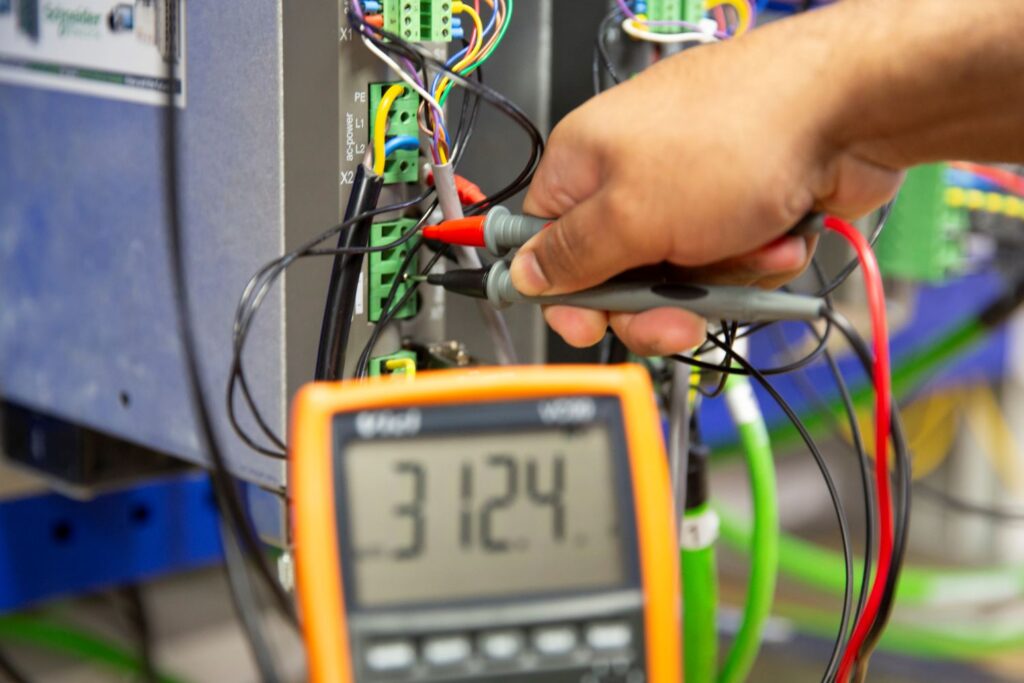What are the risks of delaying maintenance in manufacturing industry? Before considering these, let’s look at some data published in last year’s RS Components Maintenance Engineering Report*. The average cost of unplanned downtime was nearly £5.5K per hour last year – a near 7% increase over 2023 – with companies experiencing up to 15 hours per week. For companies in the process manufacturing and packaging sectors, the hourly downtime cost is even higher at nearly £5.8K. With these cost implications it is clear having a robust maintenance strategy is essential for any manufacturing company. And all this is before potential reputational damage due to late customer deliveries as a result of breakdowns.
So what are some of the key risks of delaying maintenance in manufacturing industry?
- Equipment failure: probably the most obvious, but delaying maintenance increases the likelihood of unexpected breakdowns. We’ve already seen how expensive this can be and, if extrapolated to a full year, downtime can total 780 hours or over a month. Cost-wise this equates to a staggering £4.29m. On its own this should be sufficient to motivate any company to ensure a robust maintenance schedule is in place. However, there are others to consider.
- Shortened asset lifespan: following a maintenance strategy can extend the lifespan of equipment as deferring maintenance can lead to premature wear and tear. Where legacy equipment such as PacDrive M is used, whilst many parts are readily available there are some items where this is not the case. For example, sourcing MAx-4 controllers and spare parts for repairs – is becoming near impossible.
- Higher repair costs: minor issues can potentially escalate into more serious failures. These can lead to the need for more extensive – and expensive – repairs; in the worst cases it could even mean full replacements. As we have seen above, for some legacy equipment direct replacements may not even be an option.
- Reduced efficiency: another implication is reduced efficiency due to worn components. This leads to a reduction in productivity as well as a likely consequent increase energy consumption.
- Product quality issues: poorly maintained machinery can potentially lead to defective products, increased rejects and the need to remake or repack. This can also cause production delays as well as reduce productivity.
- Supply chain disruptions: equipment breakdowns and delays in getting lines up and running quickly can affect deliveries. This can then lead to possible penalty clauses with customer relationships also being affected.
- Loss of competitive edge: overall, inefficiencies as a result of breakdowns, quality issues and late deliveries amongst others can reduce a company’s competitiveness. With competitive advantage being constantly sought, anything which risks compromising this puts any company in an unenviable position.
These are just some of the risks of delaying or deferring maintenance in manufacturing. Others, such as safety hazards due to poorly maintained equipment, environmental risks and even (regulatory) compliance violations, could also be important consequences.
There may be many reasons why maintenance is delayed, such as time due to pressure to complete orders and on-site resource. However, there are not many reasons why at least asset condition monitoring – using a tool such as our Machine Analyser – cannot be adopted. Simply this monitors equipment such as PacDrive M or PacDrive 3, in real-time collecting data which can alert engineers to potential issues and help diagnose existing ones.
So whilst any delay to or deferment of maintenance is clearly not recommended for the reasons discussed above, tools and techniques do exist which allow equipment to be continuously monitored and to alert of any issues.
* in conjunction with the Institution of Mechanical Engineers (IMechE)

